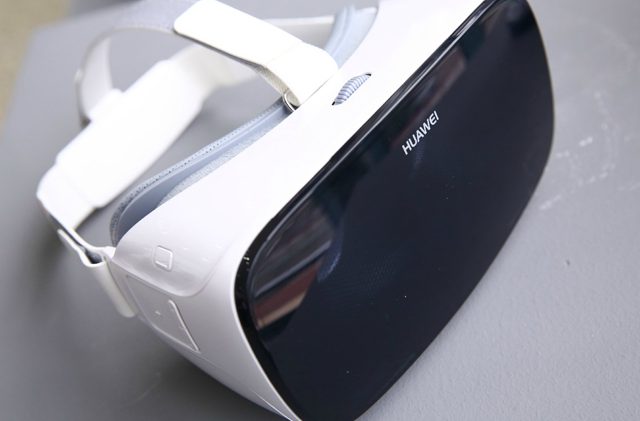Introduction
The headset looks a lot like Samsung’s Gear VR with similar features, but runs on Google’s new VR platform, Daydream. Despite the exterior, the headset still has a lot of similarities with Google’s headset in terms of the visual experience.
I’ll compare Huawei’s VR headset to Google’s and Samsung’s, with an emphasis on Google’s Daydream View as the software is the same, making it much more comparable.
The Design
In terms of navigation, the developers have included a slightly raised touchpad and a “back” button. These are both conveniently located on the right-hand side of the unit. There is also a knob to adjust the focus that is found near the USB port on the bottom half of the headset. So, making minor adjustments while playing a game or watching a video is made simple. Although not yet available, Huawei has promised to release a 360-degree surround sound system which is said to provide a truly “immersive” viewing experience. It has yet to be seen whether this claim will be transformed into a reality during the coming months. With a display of 5.5 inches and a weight just over 250 grams, most users will find the device quite comfortable to wear.
Compatibility
Although the headset integrates its own LCD displays, it isn’t standalone. Indeed, it requires a connection either to a smartphone or a PC.
Regarding the minimum PC requirements, users’ computers will need at least an Intel Core i5 CPU as well as an NVIDIA GeForce GTX 1060 GPU (equivalents or higher).
Performance
The Huawei VR contains a Mali-T880 MP4 graphics processor and a Kirin 955 chipset, so the display and functionality will inevitably be smooth. The manufacturers observe that the device pack a “full HD “experience and this claim does not seem to be far off of the mark considering that 1080p resolution and an impressive 401 pixels per square inch are present. Still, let’s not forget that this display is still considered to be the “middle of the road”; the Samsung version boasts no less than 577 pixels per inch.
User Comfort
While the Daydream View is lighter, it is built with some relatively hard foam padding. The foam used in Huawei’s VR headset on the other hand had a very soft feeling to it, but at the same time the headset was quite heavy. If the Daydream View had softer foam, it would be the preferable option for comfort, but as they are, which ends up being the most comfortable for long term use may depend on the individual’s facial structure.
Features
Flip-up visor: Enables users to easily change between virtual reality and the real world, without having to take off the headset.
Versatility: Users may use their Huawei smartphone to access VR apps, or tether the headset to a PC and access the SteamVR platform for gaming.
IMAX theater: This VR headset allows users to benefit from Huawei’s partnership with IMAX and access their own virtual movie theater.
360° DTS sound: For a more immersive user experience.
Versatility: Users may use their Huawei smartphone to access VR apps, or tether the headset to a PC and access the SteamVR platform for gaming.
Pros
Not heavy
Full HD
High quality sound
Flip-up visor
Fast graphic Processor
Affordable
Cons
Not compatible with all android device
Conclusion
Thw Huawei VR headset or Huawei Virtual Reality Glass, from all indication is a “must have” accessory. With this versatile VR headset, Huawei aims to compete with high-end products such as the Oculus Rift or the HTC VIVE. Unlike most available VR headsets, the Huawei VR headset is very affordable










